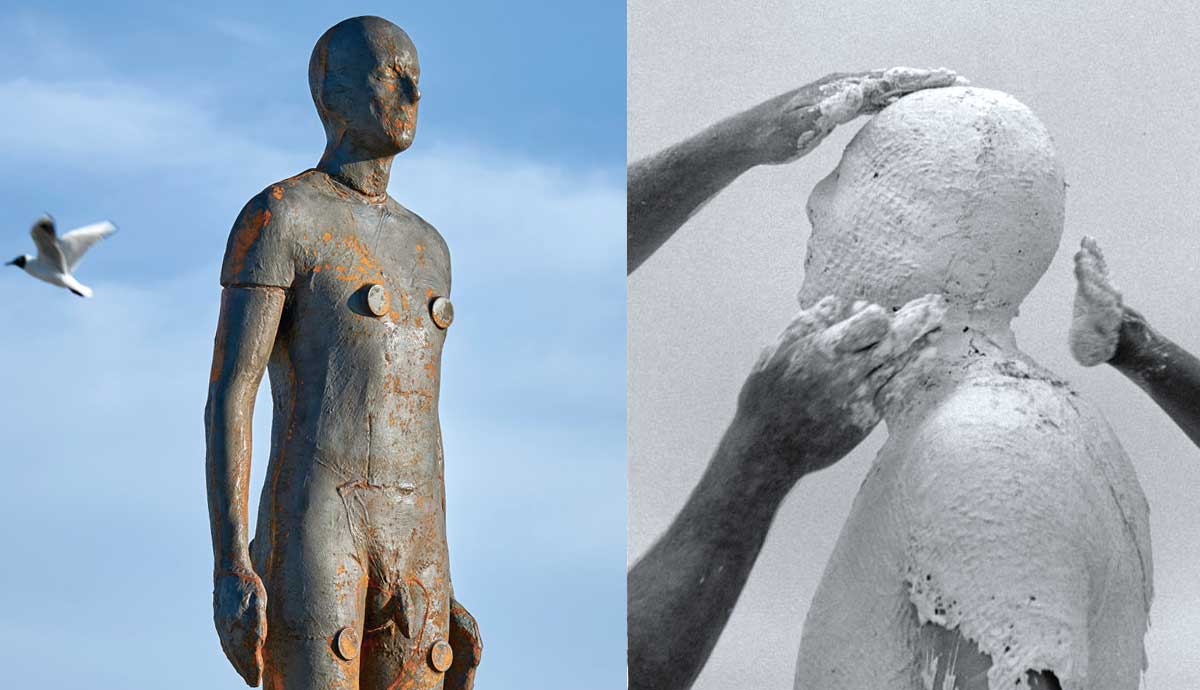
Renowned British sculptor Antony Gormley has made some of the most important public art sculptures of our time. His art includes The Angel of the North, Event Horizon, Exposure, and Look II. While he has explored a range of different techniques, styles and processes, Gormley has made many of his most celebrated public artworks from casts of his entire body. He is less interested in direct self-portraiture, and more concerned with making his body into a kind of universal, everyman symbol. Completing full body casts is a long and complicated process which can easily go wrong, but Gormley gets quite a thrill out of the challenge. We look into the techniques Gormley has used over the years in order to make his body casts as successful as possible.
He Covers His Body in Vaseline and Wraps Himself in Cling Film

Before Gormley can make a cast of his whole, naked body, he covers himself from head to toe in Vaseline, to ensure none of the plaster will soak to his skin. He has learned the hard way that if the plaster sticks to the hairs on his skin it is almost impossible to remove, and also very painful! He then wraps a further protective layer of cling film over himself, leaving a breathing hole for his nose.
Assistants Place Plaster-Soaked Bandages Over His Skin

Gormley has help with carrying out the next stage of the process. His wife, the artist Vicken Parsons used to carry out the whole process, but he now has two assistants to help with plaster-casting techniques. They cover his entire surface of skin with plaster-soaked bandages, making sure to carefully follow the natural contours of the artist’s body. Two breathing holes are made for the artist’s nose, but his mouth and eyes are completely covered. While Gormley’s standing figures are his most widely publicized public artworks, he has also made body casts of himself in a variety of other poses, such as curling up, or leaning forward.
He Has to Wait for the Plaster to Dry

Once his body is covered in plaster, he has to wait around 10 minutes or so for it to dry completely before his assistants can remove it. Sitting still while wrapped in a tight casing might sound claustrophobic to many. But Gormley finds the process strangely meditative, an opportunity to inhabit his inner body and be fully present in the moment without external distractions. Gormley says, “You are aware that there is a transition, that something that is happening within you is gradually registering externally. I concentrate very hard on maintaining my position and the form comes from this concentration.” Once the plaster is dry, his assistants carefully cut the casing from his body. They do this by cutting the plaster casing into two neat halves and pulling them from his skin.
Gormley Encases the Hollow Plaster Shape in Metal

The hollow plaster casing that Gormley makes from his body casts then becomes a starting point for his metal sculptures. First, Gormley puts the two halves back together again to make a complete, empty shell. Gormley strengthens this case with a fiberglass coating. Then he coats this shell with a layer of roofing lead, welding it at the joining points, and sometimes along the axes of the limbs. Instead of trying to hide these welded marks and lines, Gormley embraces them as part of the creative process. They subsequently give his body sculptures a tactile, sensuous quality which reminds us of the painstaking process that went into their making.










